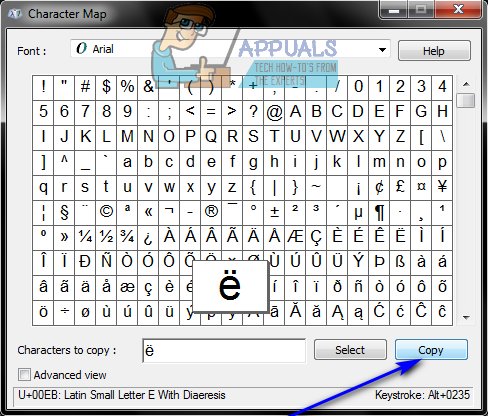

:max_bytes(150000):strip_icc()/ALTCodesMac3-4768659-7fc1c69020234a9b8d0e414c8b4ec3c2.jpg)
Certain special characters can be used in passwords some organizations require their use. See § Latin-1 Supplement and § Unicode symbols for additional "special characters". The 33 characters classified as ASCII Punctuation & Symbols are also sometimes referred to as ASCII special characters. The remaining 43 belong to the common script. See also: ASCII § ASCII printable charactersĩ5 characters the 52 alphabet characters belong to the Latin script. Unix / Linux systems use Control-D to indicate end-of-file at a terminal.
Ascii for e with tilde windows#
11 Control-Z has commonly been used on minicomputers, Windows and DOS systems to indicate "end of file" either on a terminal or in a text file.

10 Control-X was commonly used to cancel a line of input typed in at the terminal. Other manufacturers used Control-X for this purpose. 9 Control-U was originally used by Digital Equipment Corporation computers to cancel a line of typed-in text. Output is suspended until restarted by the Control-Q key. 8 Control-S has been used to tell a host computer to postpone sending output to the terminal. 7 Control-Q has been used to tell a host computer to resume sending output after it was stopped by Control-S. Output is not sent to the terminal, but discarded, until another Control-o is typed. 5 Carriage Return (accompanied by line feed) is used as "end of line" character by Windows, DOS, and most minicomputers other than Unix- / Linux-based systems 6 Control-O has been the "discard output" key on minicomputers. 4 Line feed is used for "end of line" in text files on Unix / Linux systems. This was carried over on PCs by generating a buzz sound. Important messages could be signalled by striking the bell on the teletype. 3 Control-G is an artifact of the days when teletypes were in use. Windows, DOS, and older minicomputers used Control-Z for this purpose. 2 Control-D has been used to signal "end of file" for text typed in at the terminal on Unix / Linux systems. All belong to the common script.ġ Control-C has typically been used as a "break" or "interrupt" key. See also: ASCII § ASCII control characters, and Control PicturesĦ5 characters, including DEL. The semicolon is required.īecause numbers are harder for humans to remember than names, character entity references are most often written by humans, while numeric character references are most often produced by computer programs. Where name is the case-sensitive name of the entity. The format is the same as for any entity reference: The entity must either be predefined (built into the markup language) or explicitly declared in a Document Type Definition (DTD). In contrast, a character entity reference refers to a character by the name of an entity which has the desired character as its replacement text. The hhhh may mix uppercase and lowercase, though uppercase is the usual style. Additionally, the operating systems change on occasions the default fonts they provide, so the character might not look the same on your operating system. The nnnn or hhhh may be any number of digits and may include leading zeros. Latin Small Letter E With Tilde on various operating systems Please note that the image above is computer generated and not all images are curated, so certain errors might occur. The x must be lowercase in XML documents.
Ascii for e with tilde code#
Where nnnn is the code point in decimal form, and hhhh is the code point in hexadecimal form.

A numeric character reference refers to a character by its Universal Character Set/ Unicode code point, and a character entity reference refers to a character by a predefined name.Ī numeric character reference uses the format HTML and XML provide ways to reference Unicode characters when the characters themselves either cannot or should not be used. See also: List of XML and HTML character entity references and Unicode input 12 Other south and central Asian writing systems.Characters that differ from ISO-8859-1 is marked by light blue color.
Ascii for e with tilde iso#
Is a superset of ISO 8859-1, also called ISO Latin-1, in terms of printable characters, but differs from the IANA's ISO-8859-1 by using displayableĬharacters rather than control characters in the 128 to 159 range. The table below is according to Windows-1252 (CP-1252) which There are several different variations of the 8-bit ASCII table. Character 127 represents the command DEL. You will find almost every character on your keyboard. The first 32 characters in the ASCII-table are unprintable control codes and are used to control peripherals such as printers.ĪSCII printable characters (character code 32-127)Ĭodes 32-127 are common for all the different variations of the ASCII table, they are called printable characters, represent letters, digits, punctuation marks, and a few miscellaneous symbols. ASCII control characters (character code 0-31)


 0 kommentar(er)
0 kommentar(er)
